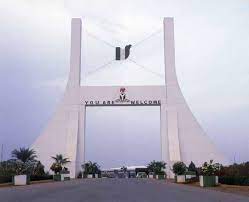While in the third term of my fourth year in secondary school in 1983, the Zonal Office of the Niger State Ministry of Education organised…
While in the third term of my fourth year in secondary school in 1983, the Zonal Office of the Niger State Ministry of Education organised an excursion to Abuja, the New Federal Capital City for secondary school students in the former Suleja Local Government Area. Being the monitor of my class, I was among those selected from Government Science College (GSC) Izom to represent our school. The colleges that were also represented which I can now remember, were Government Secondary School, Government Day Secondary School and Government Teachers College, all in Suleja.
We had a Press Club for GSC Izom, which coincidently I was the editor, supervised by Miss Margo Mc Loughlin. She was a Canadian on a Canadian foreign programme in Nigeria, known as CUSO. Apart from her primary assignment of teaching English and French, she also made a voluntary service as a Karate instructor for the college, in which I also participated. She guided the Press Club to produce a magazine for GSC Izom, and charged me to write about my experience on the Abuja tour, which I wrote an article in the magazine, titled ‘Abuja As I Saw It’.
Meanwhile, the landscape that constituted the entire FCT, before the mid-70s, most especially the Gwagwa Plains, where the city is sited, were previously known to us the indigenes of the former Abuja Local Government Area, to constitute small local communities with very thick and expanse wilderness, characterised with very tall mahogany and iroko trees.
- Angry Abuja residents burn robber’s corpse after policeman’s death
- The forgotten Abuja tourism plan
Our parents particularly mine that were saw millers, chopped the trees to timber and transported them to Abuja town for cutting to various sizes of woods, used for construction. Although at a very tender age, the excursion as a secondary school student was not my first to the FCT, but it was my first when the city development commenced.
It is now 41 years ago, and a lot of water has gone down the bridge, but I can vividly recollect the details of that tour. The year 1983 was only one year from the commencement of the physical development of the city, but due to the immense commitment attached to the Abuja project, many physical structures were already built. We travelled through the old Gwagwa-Karmo road to link up with the first arterial road to be constructed in Abuja, previously named the Festival Road, but now Moshood Abiola Road.
We were driven round the old parade ground, in which neighbourhood were also the Federal Radio Corporation of Nigeria (FRCN) building, now renamed the Radio House, the first phase of the Abuja International Conference Centre and the Nicon Luxury Hotel, but then known as the Sheraton Hotel. For better clarification, the hotel popularly known as the Abuja Sheraton Hotel which was very recently renamed Abuja Continental Hotel was the Hyatt Regency Hotel at the beginning of the Abuja project. The superstructures of all these buildings were completed as at 1983.
From there, we were driven to the Akinola Aguda House which served as the first official residence of the President as used by late President Shehu Shagari anytime he visited Abuja. The building is now the temporary residence of the vice president, pending the completion of the permanent one. We then headed for, entered and climbed to the last floor of the Presidential Complex which was then under construction, but the superstructure was also completed.
The FCDA protocol officer guiding the excursion told us that the complex was designed to accommodate the Nigerian president and four other visiting world leaders at a time. But in the absence of the president occupying the complex, it can accommodate up to 15 visiting world leaders. However, the Ibrahim Babangida’s military government decided to jettison the use of the original Presidential Complex for its original purpose due to security reasons. Instead, the edifice is now converted to the Secretary to the Federal Government’s office. The location of the Aso Rock Villa the present official residence of the President was originally to serve as the Presidential Guest House.
Finally, we had a stopover at the old Wuse village for entertainment with water, soft drinks and cakes. At that time most of the original Wuse community had already been evacuated to the New, or Sabon Wuse in Niger State as enshrined in the original resettlement policy of the FCT.
Only four ordinary-level institutions earlier mentioned participated in the excursion, with the exception of the Women Arabic Teachers College Diko. These were the only post-primary institutions in the former Abuja, later renamed Suleja Local Government Area, by extension it included and also served the entire FCT as at 1979. The experience of that tour and the assignment by Miss Margo Mc Loughlin to write ‘Abuja As I Saw It’ left an indelible mark in me and influenced my present professional endeavors. Wherever she is today I pay special tribute to her.
This article was earlier published on March 22, 2024

 Join Daily Trust WhatsApp Community For Quick Access To News and Happenings Around You.
Join Daily Trust WhatsApp Community For Quick Access To News and Happenings Around You.


